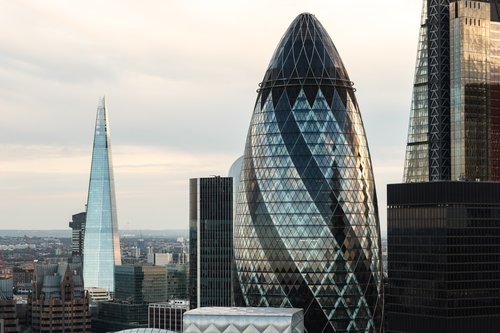You are challenging the banks, but are you a challenger brand?
In the world of alternative finance and FinTech, the favourite word is 'disruption' - it defines the opportunity and gives a sense of purpose and, hey, it sounds edgy and cool at the same time. Nearly everybody I talk to wants to be a 'challenger brand'.
When we talk of challenger brands we tend to think of Virgin Atlantic playing out its long standing war of words with British Airways or Pepsi forever challenging Coca Cola, but what exactly does a challenger brand look like today? And more importantly, how does a business become one and sustain it for the long term?
What is a challenger brand?
For the answer, we can do a lot worse than go to the original book on the topic, Eating the Big Fish, written in 1999 by Adam Morgan. In his book Adam describes challenger brands as:
“…brands and businesses with ambitions that outstrip their resource; those who know they must apply a very different approach to strategy, positioning and company culture in order to compete with the established leaders.”
Well, there are certainly plenty of those in FinTech, so does that mean everybody is a challenger brand by definition?
Different types of challenger brands
The key defining characteristic of a challenger brand can be summed up in one word - attitude.
In a later work, Adam describes 10 different types of challenger brand. The credit for the definitions must all go to him, but where I can, I have suggested examples in the AltFi/FinTech space. Please give me other suggestions if you can think of them.
- The Irreverent Maverick: Best described as “counterculture attitude in a box”, Mavericks engage their audience with attitude, character, and unconventional tactics (e.g. wit and humour) to challenge the leader. Think of Innocent's unconventional approach to packaging and delivery vans in its early days.
- The Missionary: A challenger with a transparent sense of purpose, Missionaries actively challenge what they want to change, believing it to be ideologically wrong. A great example here being Anita Roddick's passion for the way her health and beauty business positioned itself or Al-Jazeera looking to ‘redress the balance’ in media coverage of the Middle East.
- The Next Generation: Next Generations challenge the relevance of the market leader to the current generation, positioning themselves as the right brand for the new generation. When a bold and contemporary looking First Direct bank came to market successfully offering intelligent telephone and internet banking as its core strategy, the market leader had to play catch up fast. More recently we can look at GoCardless or Nutmeg.
- The Democratiser: Democratisers take something that was previously exclusive, and engage their audience by making it broadly available to the masses. Example: Seedrs / CrowdCube.
- The Real and Human Challenger: A ‘real’ people brand in a faceless category, enabling the consumer to establish a connection to the people behind the brand. Richard Branson has to be the prime nominee for this particular award with all the Virgin brands taking a challenger status at some stage.
- The Enlightened Zagger: Deliberately going against the norms, Zaggers reject commonly-accepted trends, behaviours, and beliefs – provoking their audience with their surprising stance. A recent success story has to be Scottish craft beer revolutionaries, Brewdog, who have stepped outside their category norms.
- The Visionary: Challenging the mundane ways the category thinks about its nature and role, Visionaries set out a higher vision for the future and then turn that vision into a reality. Altfi examples would be the pathfinders: RateSetter / Zopa and Funding Circle
- The Game Changer: Not only do they change the way we think, Game Changers completely change the way we live our lives. An example would be the impact that Uber is making on the way we get around everyday. Tesla are also doing it with ground breaking automotive technologies. In finance, we might look at Xero, which is leading the way in cloud accounting
- The Peoples’ Champion: Challenging the motives and interests of the market leader, the Peoples’ Champion stands up for consumers who have been exploited by the incumbents - the stated raison-d-etre of virtually every Altfi business.
- The Scrappy David: The classic David vs Goliath, the Scrappy David creates a binary battle: good versus evil, big versus small, us versus them.
So do we have any true challenger brands in AltFi?
The truth is, while AltFi has some challenger brands, and it is surely no coincidence that they have succeeded, I have struggled to think of good examples for most of the categories.
Most AltFi and FinTech businesses cluster together under the heading of 'Scrappy David', nipping away at the ankles of the establishment, positioning the large banks and insurance companies as evil tyrants and themselves as the good guys fighting the battle for the downtrodden SME or saver.
But where are the real and human challengers; who is zagging while others zig; who are the new missionaries; and where is our truly irreverent Maverick?
I have argued before that businesses within the industry are paying insufficient attention to their branding. For understandable reasons, the initial focus has been on developing the technology and the infrastructure to deliver the functional elements of their propositions. Collectively, they have made FinTech the democratiser, the game changer and the scrappy David, but there are precious few examples of strong individual brands emerging.
To quote Adam Morgan again:
"The mark of all great challenger brands is their ability to disrupt the norm and create a passionate following. Whether moved by indignation or idealism, consumers engaged by challenger brands transform from a state of apathy to one of vocal buy in. Having found their voice, they take to social media – offering young, resource-poor businesses reach otherwise beyond their means. This sheer volume coupled with the authenticity of genuine consumer referrals works its magic, creating a critical mass resulting in rapid growth".
Stopping the slide back to the middle
The problem is that, as the industry matures, the businesses that are finding traction and approaching critical mass are starting to discover why the incumbents that they set out to disrupt have been doing things a certain way for so many years. They are changing their policies and procedures and becoming more...well, like banks. The rub is that the consumers' initial wave of enthusiasm, born out of a sense of revolution, will inevitably peter out.
The imperative, therefore, is not just to adopt 'challenger brand' as a label, but to be and remain a challenger brand at the core. To do so, a brand must decide on the challenger profile that it is going to adopt and hold on to it passionately. And that means investing in it too.
AddThis Sharing ButtonsShare to LinkedInLinkedInShare to FacebookFacebookShare to TwitterTwitterShare to EmailEmail

Author
Neil Edwards
Neil is a Chartered Marketer and Fellow of the Chartered Institute of Marketing with many years' experience in marketing, brand and communications.
CEO / The Marketing Eye
Related Reading

Blog: Whatever happened to RateSetter?
by Neil Edwards, 4 minute read

Blog: The Real Cost of Investing with St James's Place
by Neil Edwards, 3 minute read